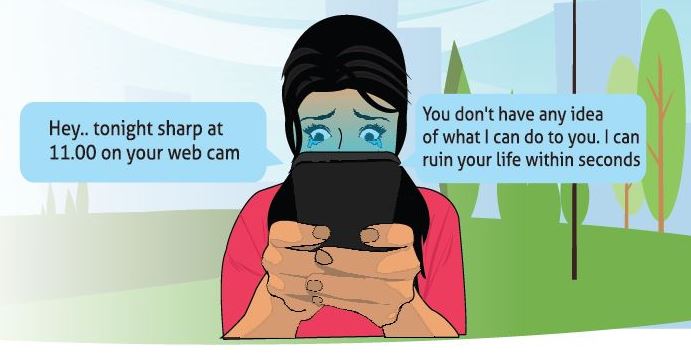 Sexting among teenagers
Sexting among teenagers
It is reported that one in four teenagers receive sex texts and one in seven is reported sending them according to study published by JAMA pediatrics.
What is Sexting?
Sex texting or sexting is sharing of sexually explicit images and videos through internet or via electronic devices such as smart phones. In last decade teenagers have begun to explore sex and sexual development digitally.
It is believed that boys are the requesters and girls are the senders but this research tells us that girls and boys equally participate in sexting.
In children, sexting is prevalent in young teenagers and increase as they grow older. In adults it’s most prevalent in people in their forties. During 1990s till 2004, sexting took place in chat rooms of computers, but with the advent of smart phones it has become more personal and portable.
Parents have the power to educate their kids about responsible wireless use and the consequences of inappropriate or nonconsensual sexting.
Few pointers / warning signs to indicate that the person is affected
- Signs of anxiety, depression, strong reactions, mood swings etc.,
- Feeling anxious and stressed when checking mobile
- Isolating self and behaving secretively
Sexting and its Consequences
- Sexting has real consequences. In some cases, sexting may cause emotional distress if the sender’s images or messages are forwarded on to unintentional audiences.
- Sexting between a minor (someone under 18) and an adult violates child pornography laws in most states, regardless of whether the images sent or received were consensual. The consequences of this behavior, whether sending or receiving, are real and could be long-term.
- Talk to your kids about the serious consequences of sexting, create family rules and use parental monitoring/management tools. By proactively addressing inappropriate sexting before it becomes an issue, parents and kids can help prevent it from happening.
What must parents do to tackle sexting
- Start discussing about sex texting early. Understand what the teenager already knows and take conversation ahead.
- Do not turn it into a conversation of morals. Discuss the subject in detail including unwanted distribution of photos or messages and possible legel consequences.
- Emphasise the need to ot to get pressurized by peer groups. It is important to understand that love can’t be proved by sex texting
- Have conversations regularly with teenagers. The earlier the parent begins the better.
- Utilize the parental control tools, such as blocking downloads, blocking unknown numbers
- Explain there are laws about sending and sharing explicit images and texts that can ruin young lives.
Use the Tools That Can Help Limit Sexting
- Keep a close eye on how kids are using their wireless devices, especially for younger teens.
- Wireless service providers also offer many tools to help empower parents to prevent sexting including:
- Limiting who, when and how kids can use their phone to contact others using voice and text services offered by wireless service providers;
- Password protecting camera, Internet or download functions on the device.
- Contact your wireless service provider for more information about parental empowerment tools. Remember that wireless service providers offer tools that manage the services and applications they offer to you while downloadable applications may require the use of different tools or settings.
Reasons for both genders indulging in Sex texting
- Teenage Experimentation
- Addiction
- Social media marketing
- Instant gratification
- Unhappy Marriages
How can you safeguard yourself against sexting ?
This kind of offence can cost you your peace of mind, they can drain you emotionally and cause negative mental/psychological effects effecting your health and well being. It is therefore important to understand the measures to protect yourself from it.
- Be aware that what you write and publish online has far reaching effect.
- Always be aware to use internet and online medium responsibly
- Never send compromising images, posts, videos of yourself to anyone, no matter who they are
- Do not open attachments from people you do not know.
- Turn off your electronic devices and web cameras when you are not using them.
- Know that you are not alone and reach out for help from family & friends
- Educate children on secured digital practices and dangers of befriending online strangers.
Case studies reported in India
Case 1: A male engineering student found it difficult to speak and was low in confidence. It transpired that he had been sex texting and a female friend is now blackmailing.
Case 2: A 40 year old woman from Middle East, married with children, seemed to be suffering from psychosis. After interviews and initial treatment it was found that she was sending explicit pictures of herself to someone on internet who promised her lots of money. For the final deal, the person had asked for more pictures but she suffered a major psychosis and broke down.
What action can we take up in case we find affected by the offence ?
- Register a complaint at your nearest cyber crime police station
- You also have the option to register an online complaint on cybercrime.gov.in
- Block the person and report to the social media account help centre to report about it.
Know about what the Law Says with regard to this offence?
Sharing private pictures, messages or videos especially of those under 18 either belonging to you or others with/without permission is serious violation of privacy, it can amount to sexual harassment and is punishable by law. Sexting is not defined or addressed by any law in India. But it may attract the following provisions depending upon the modus operandi and the consequences: Ss. 354 (D), 509 IPC, and Sec.66E, 67 & 67A & B of IT Act is also applicable.
Information Technology (IT) Act, 2000 (amended in 2008)
66E– This section lays down the punishment for knowingly or intentionally capturing, transmitting or publishing the private areas of a person without their consent, in a circumstance where they can have a reasonable expectation of privacy and of not being photographed, whether in a public or a private place.
67– This section addresses obscenity by saying ‘Whoever’ transmits, publishes or causes to be transmitted or published, any material that is ‘lascivious’, or which appeals to the ‘prurient interest’ is punished under this section.
67A– This Section addresses sharing of sexually explicit contents Whoever publishes or transmits or causes to be published or transmitted in the electronic form any material which contains sexually explicit act or conduct shall be punished on first conviction with imprisonment of either description for a term which may extend to five years and with fine which may extend to ten lakh rupees and in the event of second or subsequent conviction with imprisonment of either description for a term which may extend to seven years and also with fine which may extend to ten lakh rupees.
67B– This Section addresses punishment for child pornography and this may be the closest provision for sexting offences for teens and children. While the section is quite extensive, in the context of sexting it penalizes ‘whoever’ transmits, publishes or causes to be transmitted or published, or collects, downloads, seeks, browses, promotes, advertises, exchanges or distributes any material that depicts children in an ‘obscene’ or ‘sexually explicit’ manner. Recording your own, or another’s sexual abuse on children is also criminalized under this section.
Protection of Children from Sexual Offences (POCSO) Act, 2012
13– This section defines ‘child pornography’ as any person using a child for sexually gratifying purposes, in circumstances which depict the child’s sexual organs, where the child is used in real or simulated sexual acts, or when he/she is depicted in any obscene or indecent manner.
14– This section states the punishment for the offence in the previous section.
15– Broadly, this section criminalizes the possession or storage of child pornography by any person with the intention of transmitting, propagating or distributing it.
According to the 2018 NCRB Crime Statistics for adults, 6325 cases were filed under Sections 67, 67A and 67B of the IT Act in all States/UT’s and Metropolitan areas. For juveniles, 65 cases were filed under these sections. It is not possible to ascertain how many of these were consensual acts. However, a study conducted by Point of View, an NGO working for gender justice, found that out of 99 cases registered under S. 67 (in the years 2015-17) only 28 were non-consensual in nature. The NCRB report also states that 1543 cases were registered against juveniles under POCSO. While most of these are probably for consensual sexual intercourse rather than pornography, they provide a glimpse into the possible future when sexting among teens becomes just as prolific.
Source:Trend Micro

